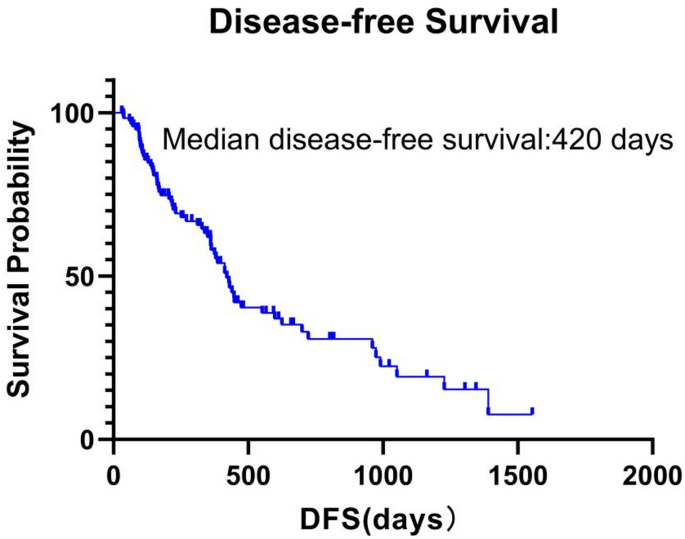Brindley, P. J. et al. Cholangiocarcinoma Nat. Reviews Disease Primers 7(1): 65. (2021).
Google Scholar
Chen, P-D., Chen, L-J., Chang, Y-J. & Chang, Y-J. Long-term survival of…

Brindley, P. J. et al. Cholangiocarcinoma Nat. Reviews Disease Primers 7(1): 65. (2021).
Google Scholar
Chen, P-D., Chen, L-J., Chang, Y-J. & Chang, Y-J. Long-term survival of…

A pair of City & Guilds executives have each been awarded million-pound bonuses and sizeable salary increases after the skills charity’s business was acquired by an international company in October, the Guardian understands.
The payments – which are understood to include a £1.7m award for the chief executive, Kirstie Donnelly, and £1.2m to the finance director, Abid Ismail – have emerged at a sensitive time for the training and qualifications business, as it navigates its first few months in the private sector.
Last week it was revealed how City & Guilds has embarked on a £22m cost-cutting drive and is shrinking its UK workforce after being sold by its charity owner to PeopleCert, an international certification company.
Alongside the bonuses, the Guardian understands that Donnelly has also been granted a £100,000 increase to her salary, which now stands at about £430,000. Ismail’s salary is also believed to have been increased by 30%, rising by about £70,000 to £300,000.
Founded in 1878 by the City of London and a group of 16 livery companies, the original institute developed a national system of technical education, offering qualifications and apprenticeships in fields ranging from manufacturing and mechanical engineering to hairdressing and horticulture. It was awarded a royal charter by Queen Victoria in 1900 and the body says that it helps about 1.1m people a year.
It has enjoyed a storied history with the body’s famous alumni including the chefs Jamie Oliver, Marcus Wareing and Gordon Ramsey, the former England football manager Gareth Southgate, as well as the celebrity gardener Alan Titchmarsh and the fashion designer Karen Millen.
The institute’s business was owned under the umbrella of a charity, City & Guilds London Institute (CGLI), which announced in the autumn that it was selling its training and awards operation, City & Guilds (C&G), to PeopleCert.
The sale gave the charity, which provides grants to people in need of vocational training, a cash windfall of between £180m and £200m, which was presented as ensuring the long-term future of the institution to pursue its charitable objectives, as well as providing increased opportunities and investment for the now-private training business.
These ambitions appear to coincide with plans for a restructuring of the C&G training business. Earlier this month PeopleCert published a presentation aimed at its financial backers in which it said it had identified £22m of savings at C&G, of which £13m were “personnel cost synergies” that would largely be achieved by failing to replace staff leaving the institute with hires from the UK.
The document implied that C&G, which has more than 1,600 staff members and 1,800 “associates” on short-term contracts, has a “churn” rate equivalent to about 300 people leaving a year and outlined how PeopleCert plans to relocate a third of those jobs to Greece “at a cost [of] up to 50% lower”. The same quantity of roles “are due to not be replaced due to overlapping functions”, the presentation added, while the remainder of leavers will be replaced with hires in the UK.
The presentation appears to have been removed from the PeopleCert website after the Guardian published the cost-cutting plans.
Under the terms of the sale, the privatised City & Guilds will continue to use the brand that it shares with its former charity owner.
A spokesperson for City & Guilds said: “[The charity] CGLI will be publishing its accounts in January 2026 and details on pay and remuneration will be reported appropriately in those accounts as always. Bonuses for eligible employees reflecting performance in 2025 are payable in line with CGLI remuneration policy. No payments outside of CGLI’s existing bonus schemes have been made. The CGLI annual accounts will report on the long-term future that is now protected for the charity. At the same time, this transaction unlocks future investment for the commercial awarding and training businesses that continue to operate in a highly competitive marketplace.
“The accounts for City & Guilds Ltd will be published at year end in 2026, as required for private limited companies. Any awards to employees are a matter for City & Guilds Ltd and are guided by standard commercial practice to ensure critical expertise and experience is retained.”

AI model: Short for artificial-intelligence model, it’s a particularly smart computer algorithm. Simple types of these models choose from a set of pre-selected info to answer a user’s requests (perhaps to respond to a chat). More complex…

CAMBRIDGE, Mass., Dec. 22, 2025 /PRNewswire/ — Nuvalent, Inc. (Nasdaq: NUVL), a clinical-stage biopharmaceutical company focused on creating precisely targeted therapies for clinically proven kinase targets in cancer, today announced that James Porter, Ph.D., Chief Executive Officer, will present at the 44th Annual J.P. Morgan Healthcare Conference on Tuesday, January 13, 2026, at 9:00 a.m. PT in San Francisco.
A live webcast will be available in the Investors section of the company’s website at www.nuvalent.com, and archived for 30 days following the presentation.
About Nuvalent
Nuvalent, Inc. (Nasdaq: NUVL) is a clinical-stage biopharmaceutical company focused on creating precisely targeted therapies for patients with cancer, designed to overcome the limitations of existing therapies for clinically proven kinase targets. Leveraging deep expertise in chemistry and structure-based drug design, we develop innovative small molecules that have the potential to overcome resistance, minimize adverse events, address brain metastases, and drive more durable responses. Nuvalent is advancing a robust pipeline with investigational candidates for ROS1-positive, ALK-positive, and HER2-altered non-small cell lung cancer, and multiple discovery-stage research programs.
SOURCE Nuvalent, Inc.

A new blood test is helping doctors predict the risk of preeclampsia earlier in pregnancy. It’s a common complication of pregnancy involving high blood pressure.
But Dr. Angela Angel, an…

We recognize you are attempting to access this website from a country…
It’s time to decide your EE Scotland Men’s and Women’s Player of the Year for 2025. There are four nominees from each squad to pick from:
Men’s A:
SWNT:

BIBLICAL accounts of families crossing lands to escape food shortages found contemporary echoes in 2025, with hundreds of thousands of people in the Middle East and Afghanistan displaced by drought and hunger, World Vision reports.
Iraq is…